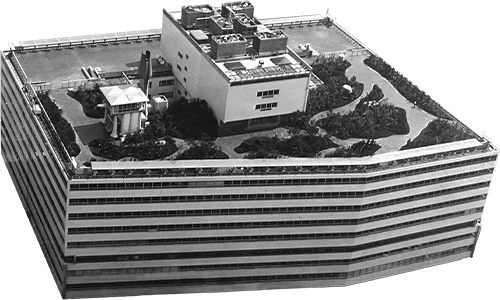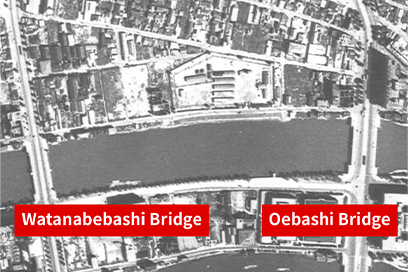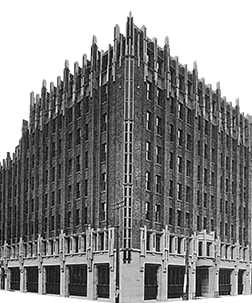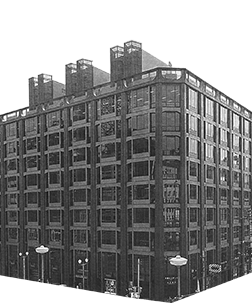 03
1963
03
1963
Osaka
The Shin-Daibiru Building
A Pioneering Office Building That Led the Way
in Large Parking Garages and Rooftop Gardens
Urban Redevelopment Trends in Major Cities
Japan experienced rapid economic growth during the 1950s and 1960s, but how was the real estate industry in the big metropolises doing?
As Japan’s economy grew, industry and population became increasingly concentrated in major cities. This pushed up land prices and accelerated the construction of office buildings in urban centers. This may have been due to the regulatory framework that was established by the national and local governments. This included the establishment of the Urban Redevelopment Act (a law pertaining to redevelopment of urban areas in connection with public facility development) as well as the creation of the “specific block” system through the City Planning Act and the revised Building Standards Act in 1961; the creation of district-based floor-area regulations through the revised Building Standards Act in 1963; and the creation of sectional superficies for underground space or airspace through revisions to the Japanese Civil Code in 1966. The Urban Redevelopment Act was used for redevelopment and the construction of mixed-use buildings near Osaka Station and Tokyo’s Shimbashi Station. The specific district system in combination with the district-based floor-area regulations made it possible to construct skyscrapers. The Urban Renewal Act of 1969 was the culmination of these regulatory developments, but these legal developments were also a response to the demand for office buildings caused by the urban concentration of industry and population.
Daibiru acquired property in Dojima where the Dojima Rice Exchange, which is believed to have been the world’s first futures trading market, had been located, after the war before the U.S. military had released it from requisitioning. Daibiru probably did so because they were convinced that the requisitioning would be released at some point, allowing development to proceed. Our company didn’t foresee the phenomenal economic growth that Japan was about to experience, but they must have sensed the possibilities. Otherwise, who would buy some desolate land with a U.S. military detention center, an entrance guarded by sentries with guns, and a perimeter surrounded by a high barbed-wire fence?
Daibiru acquired the land, and once the requisitioning was lifted, it proceeded with its plans and completed phase-one construction in April 1958. This was the South Wing of the Shin-Osaka Building—that is to say, the Shin-Daibiru Building.
-
1927 1931 Hibiya Daibiru Buildings
No. 1 and No. 2 -
2007 International Operations
-
- An Unexpected Discovery of a Good Property
- Mutual Trust and a Long-Term Perspective as Points of Agreement
- The Acquisition of a Property in Hanoi Through Unity of Philosophy
- Implementing Daibiru Quality Through Building Renovations
- Challenges in Australia, Our Second Overseas Expansion Target
- The Discovery of 275 George Street
- Difficult Contract Negotiations with JHG
- Overcoming Several Unexpected Difficulties
-




